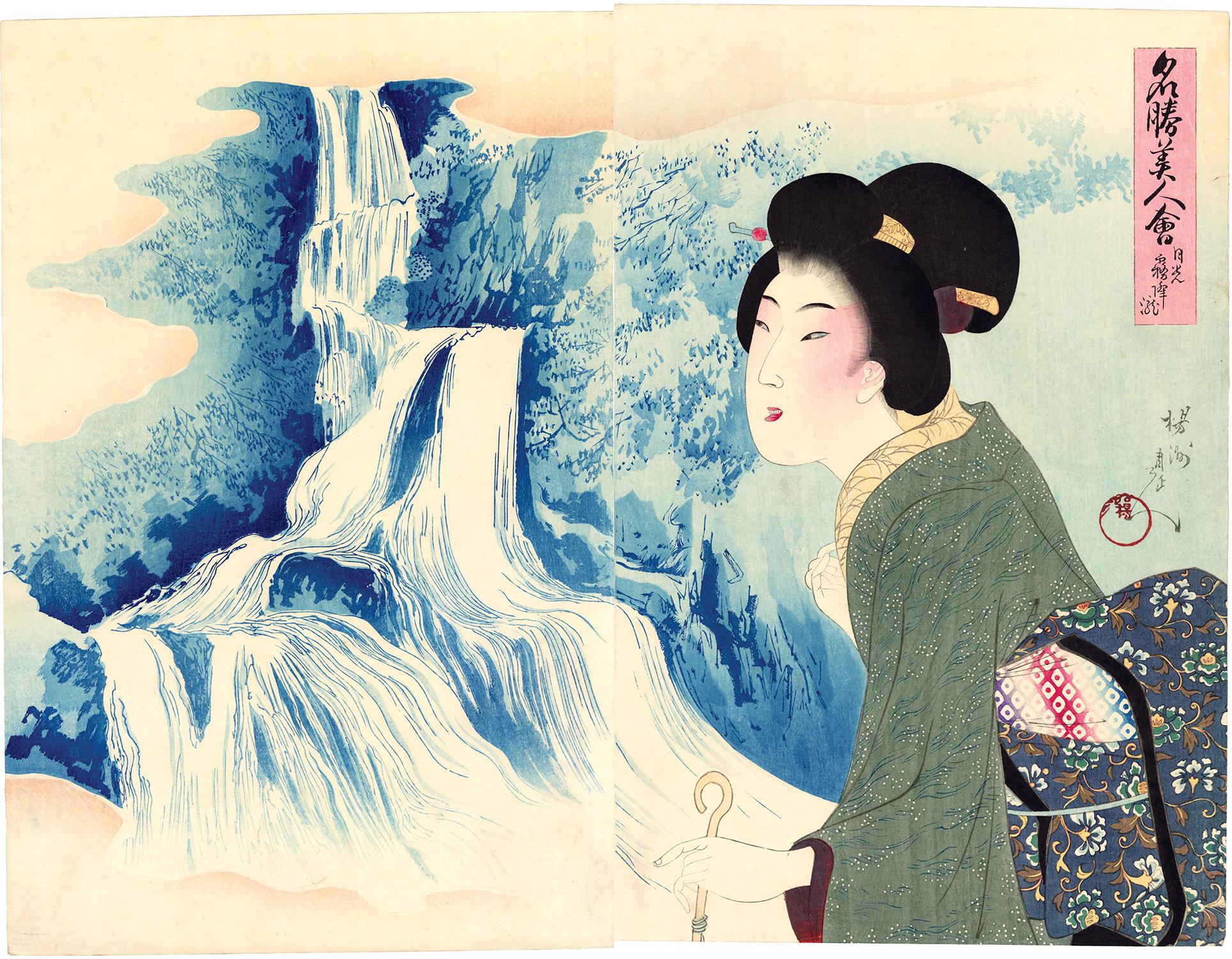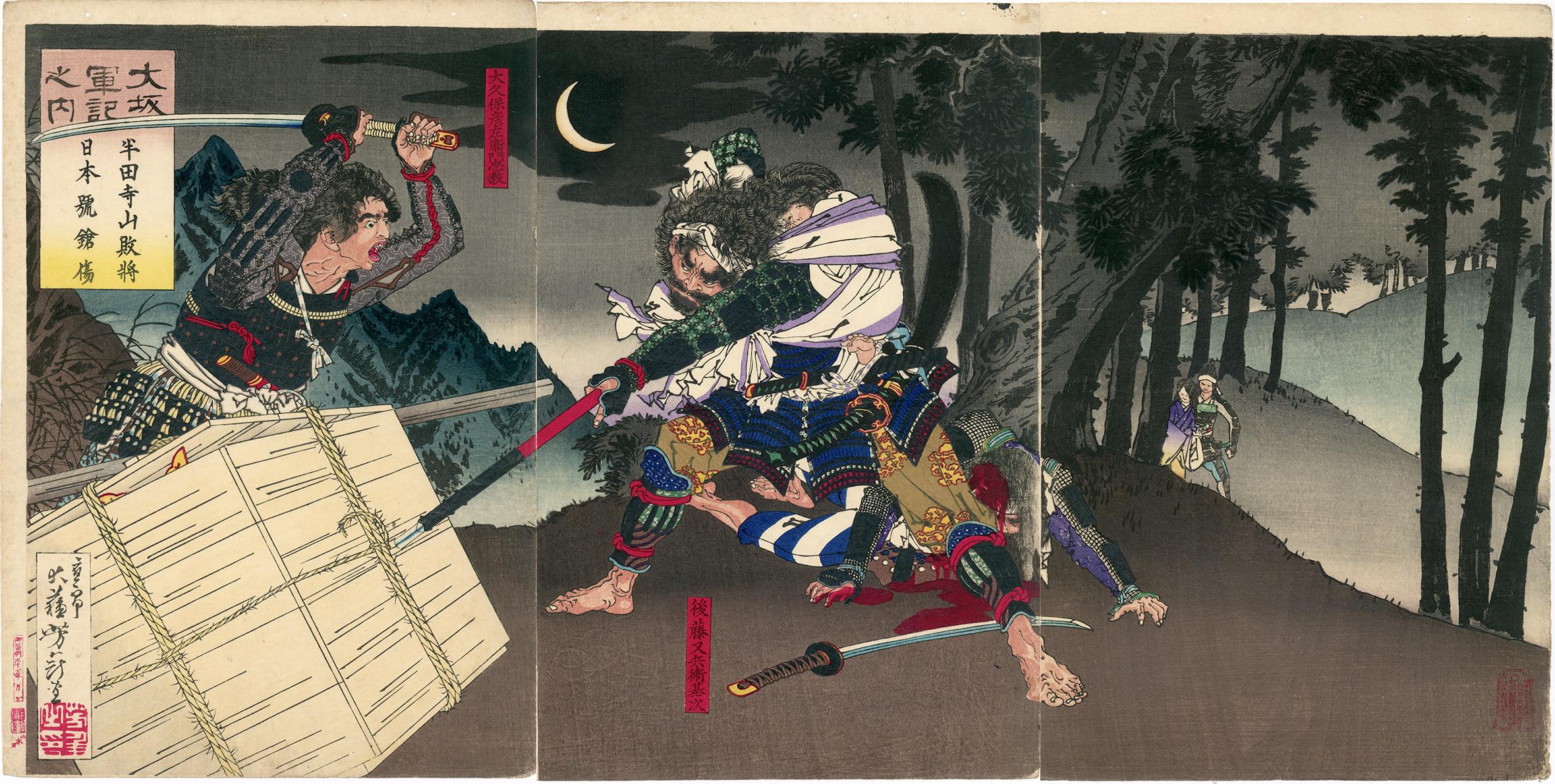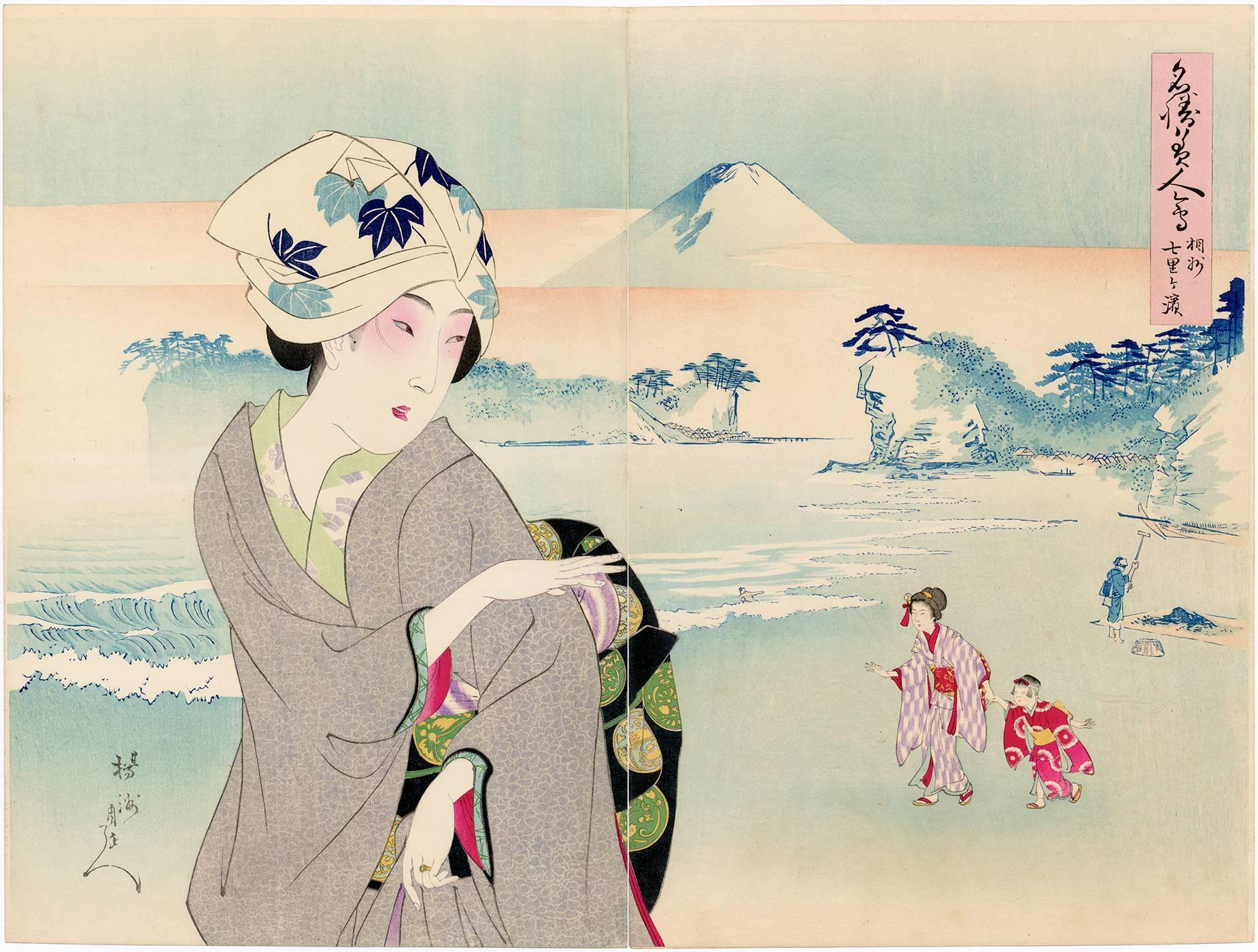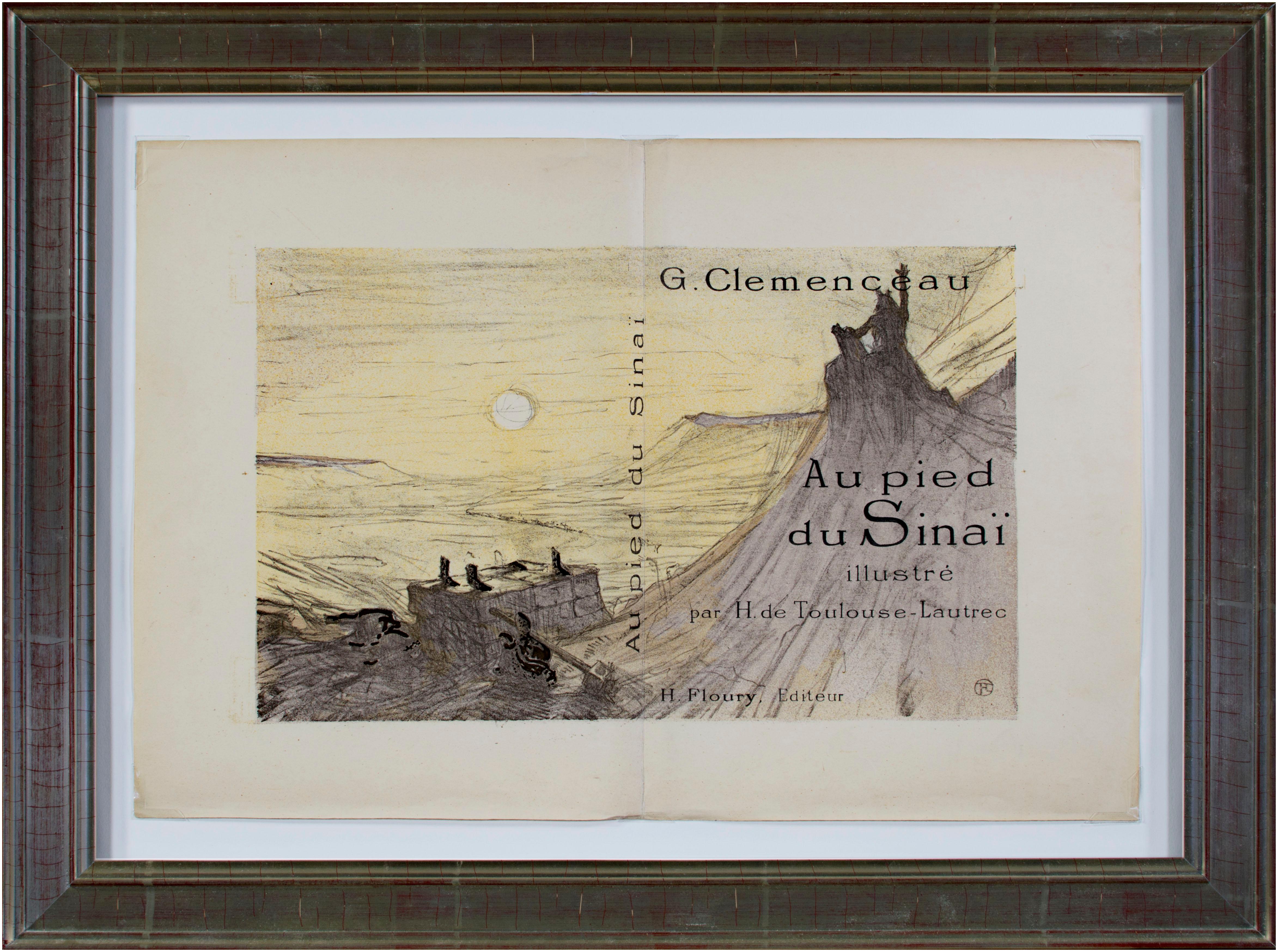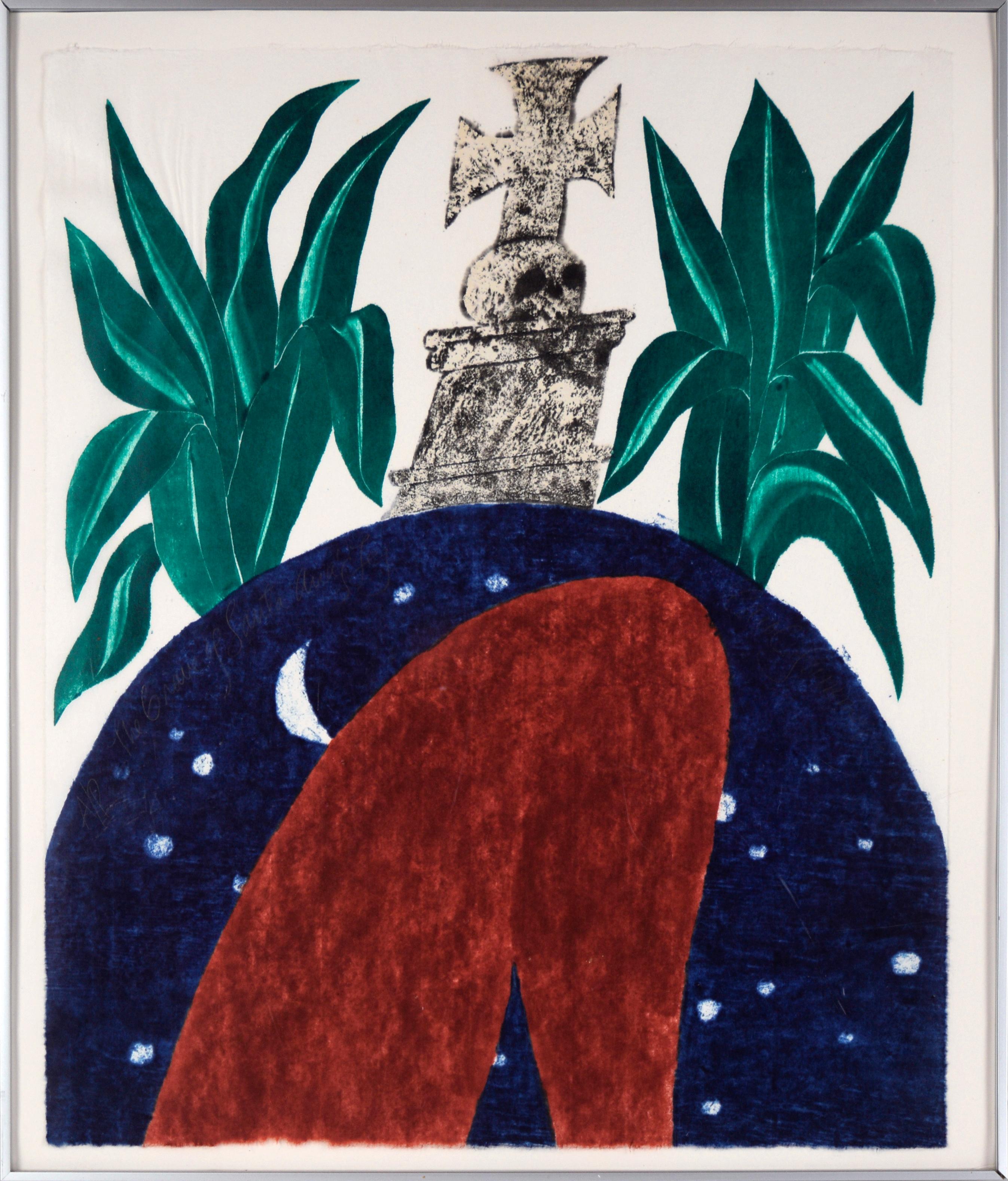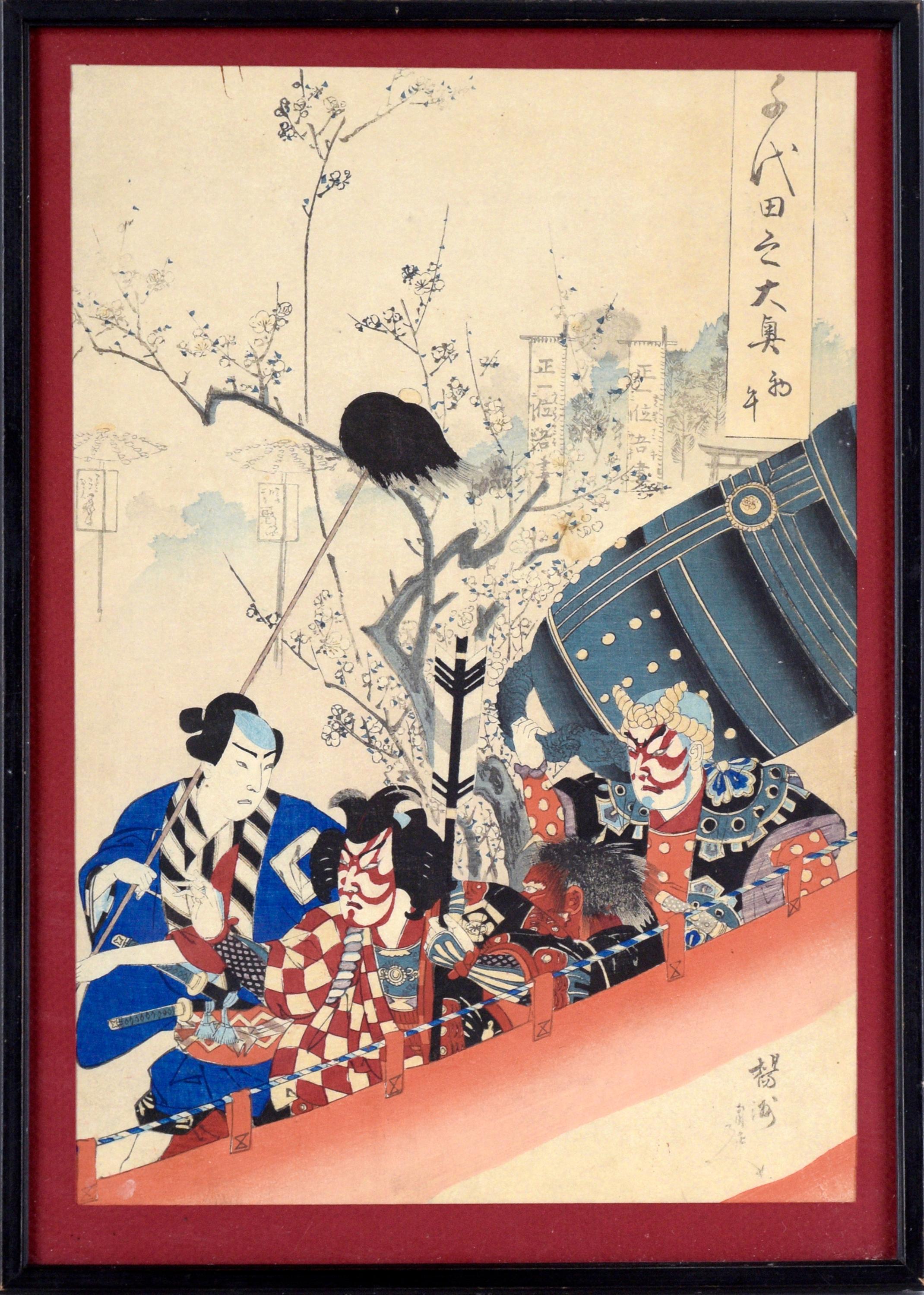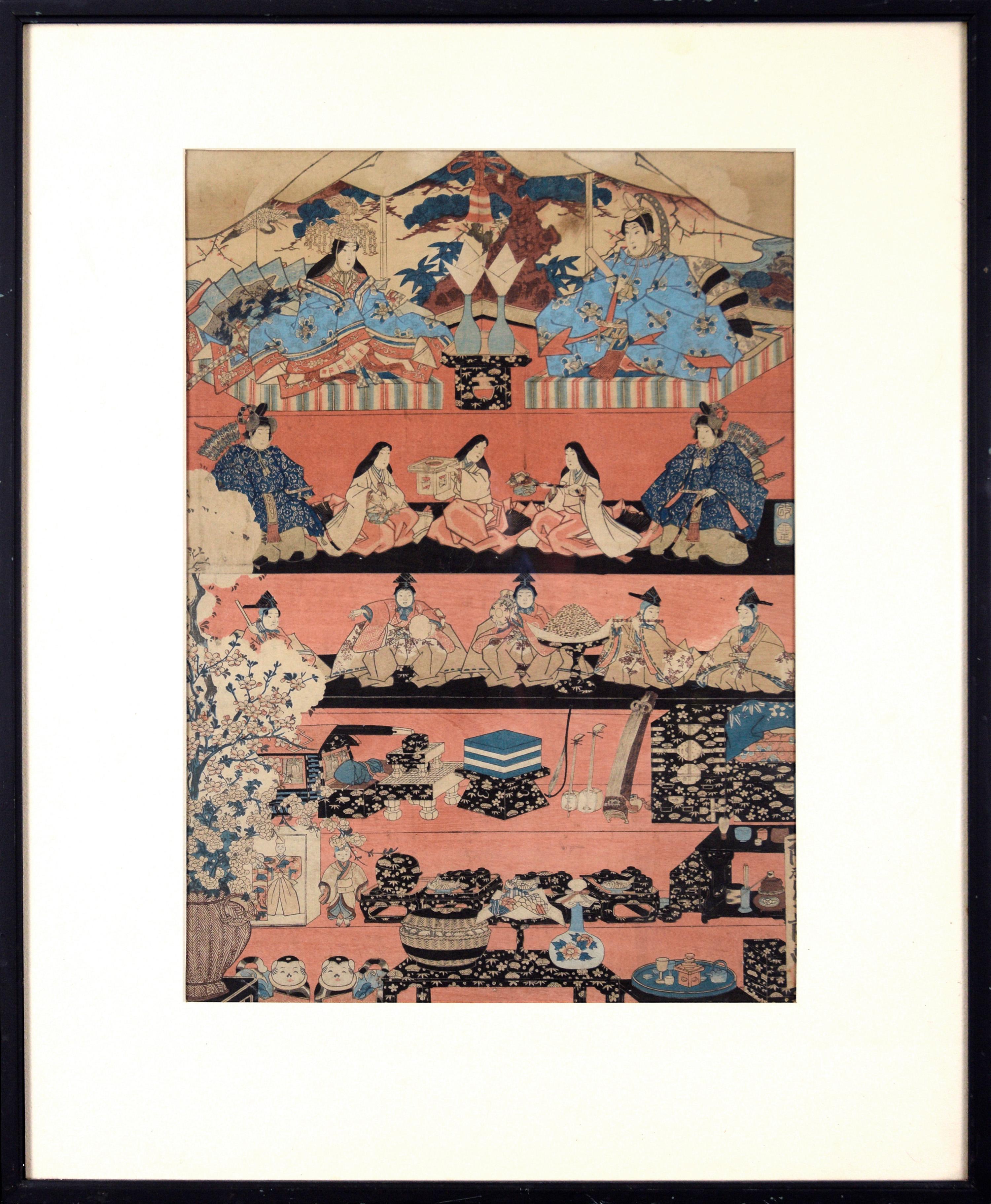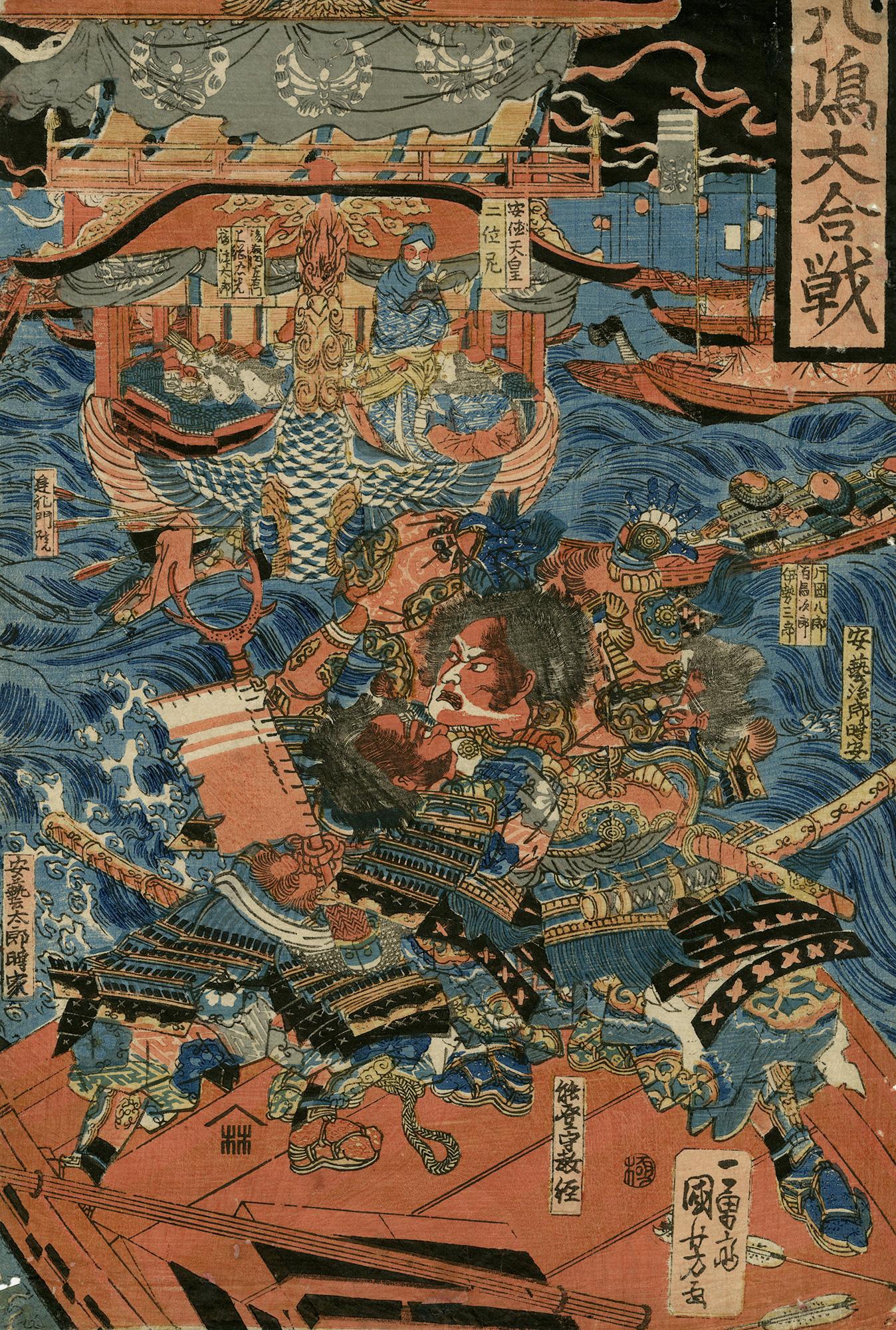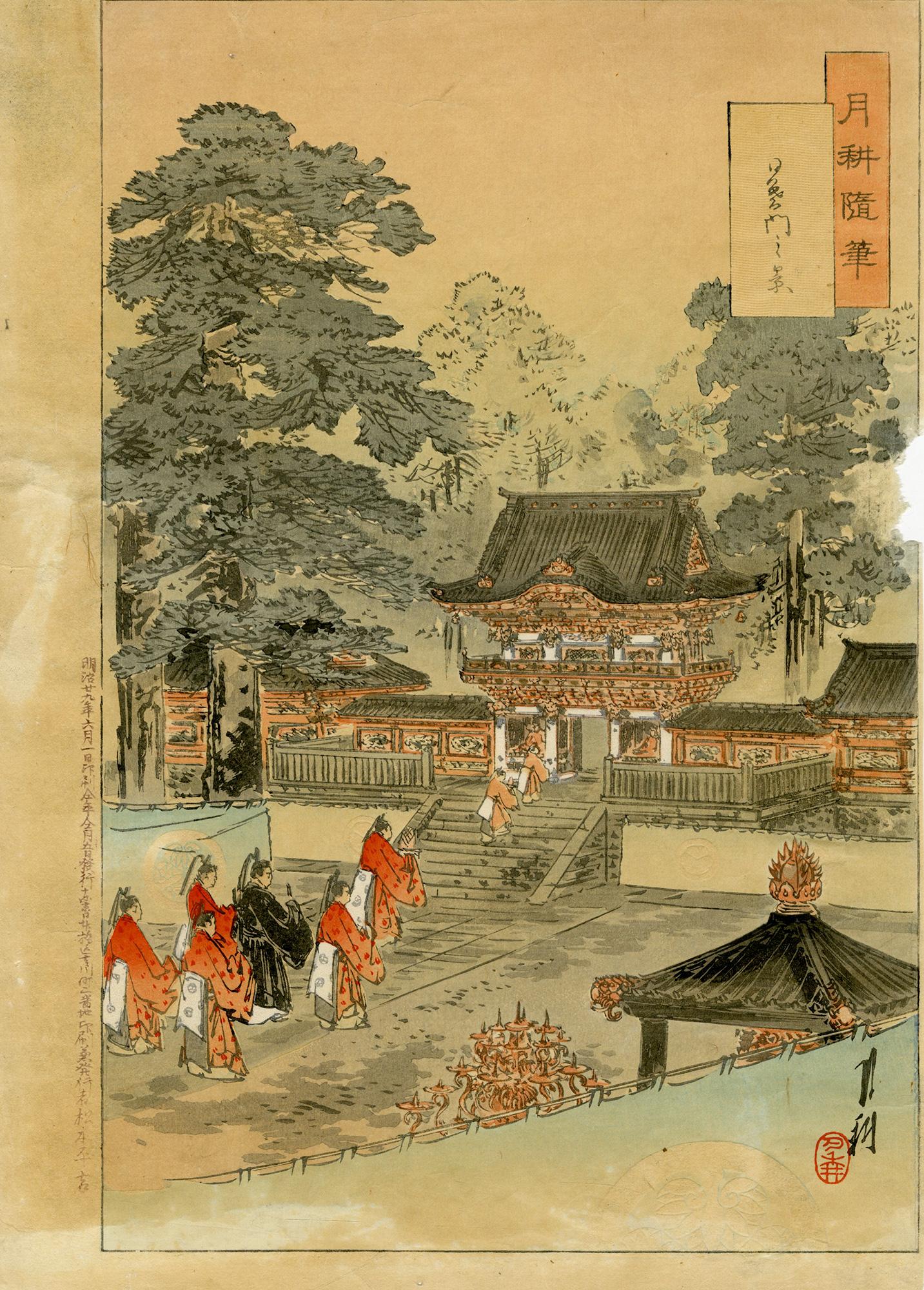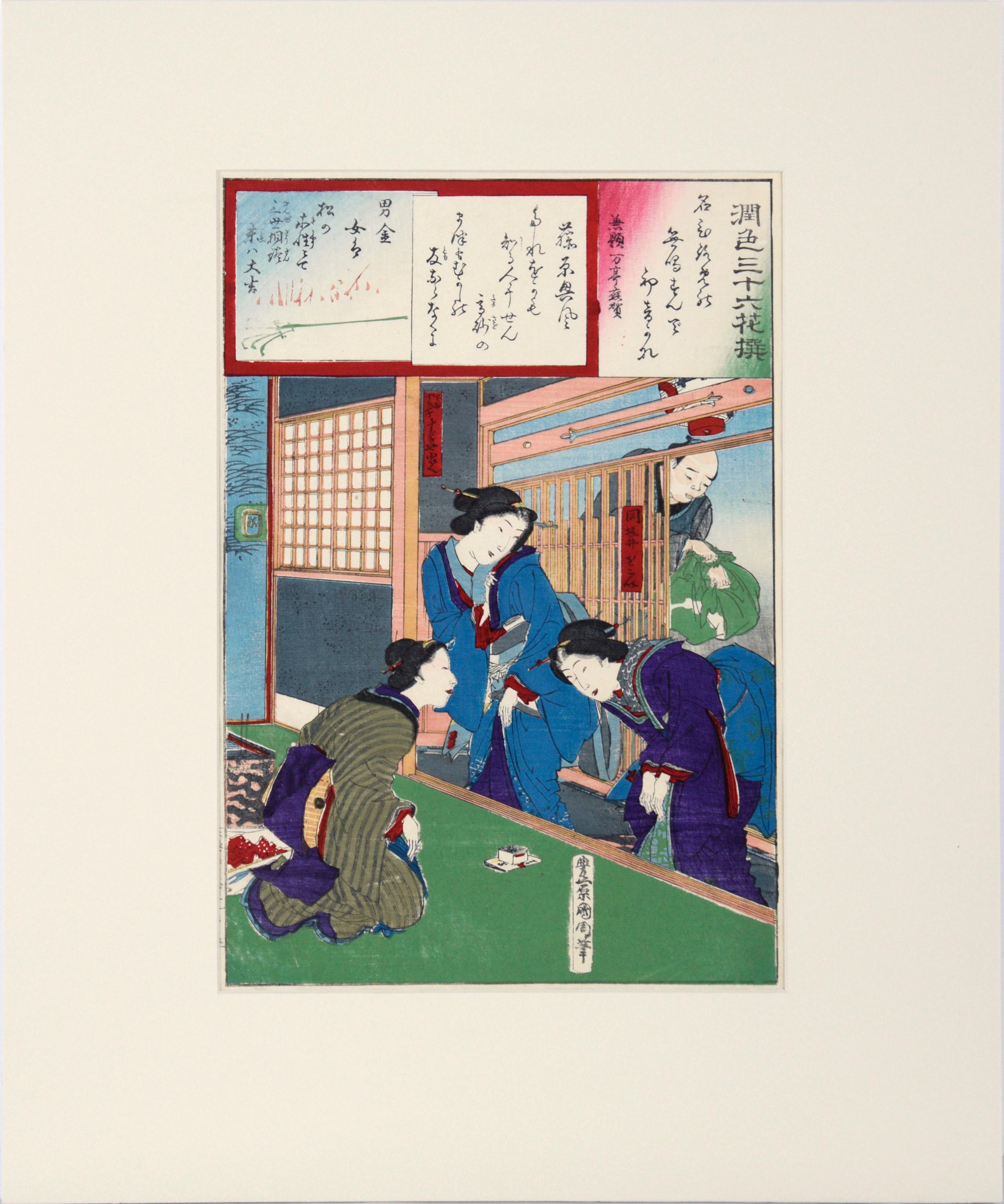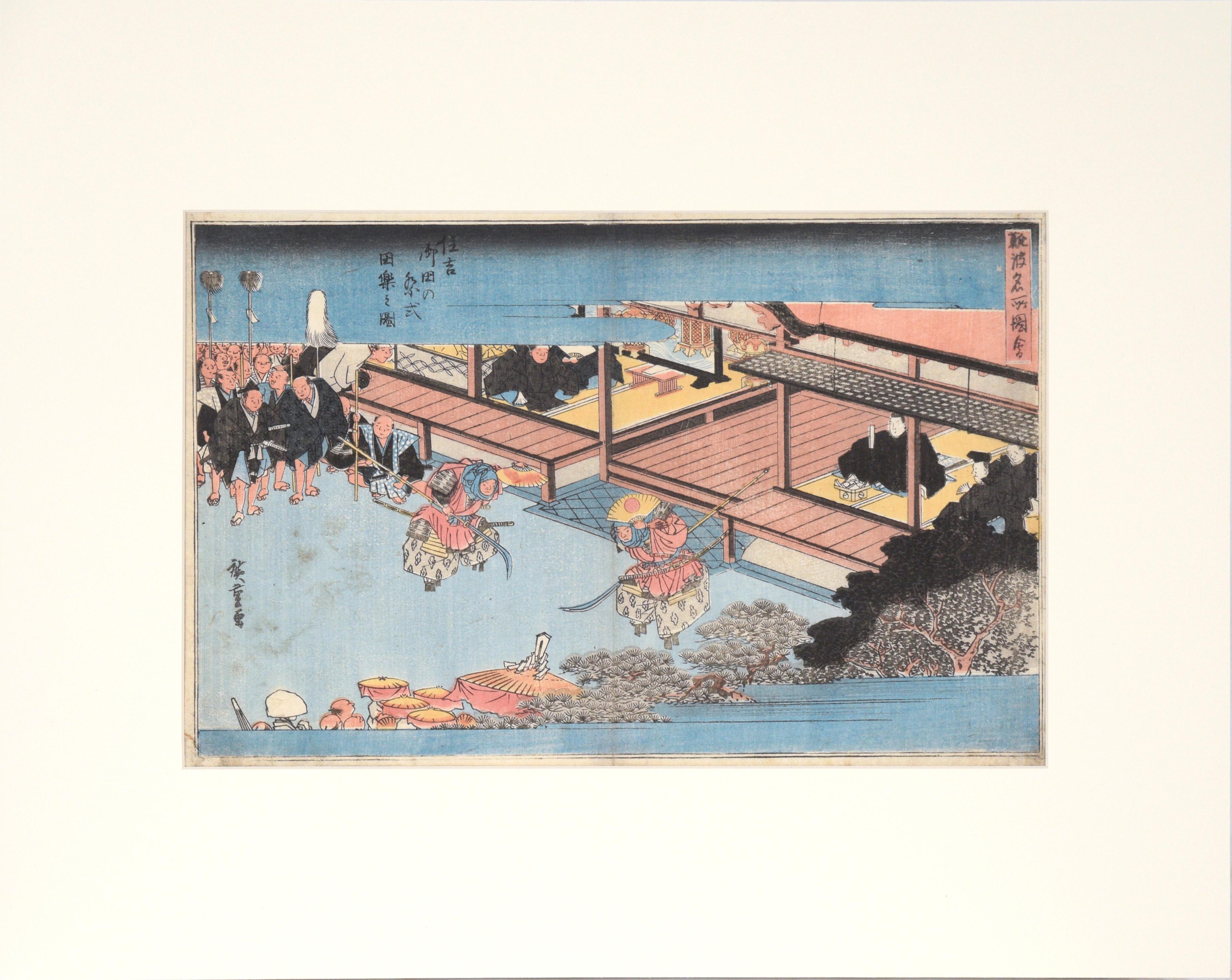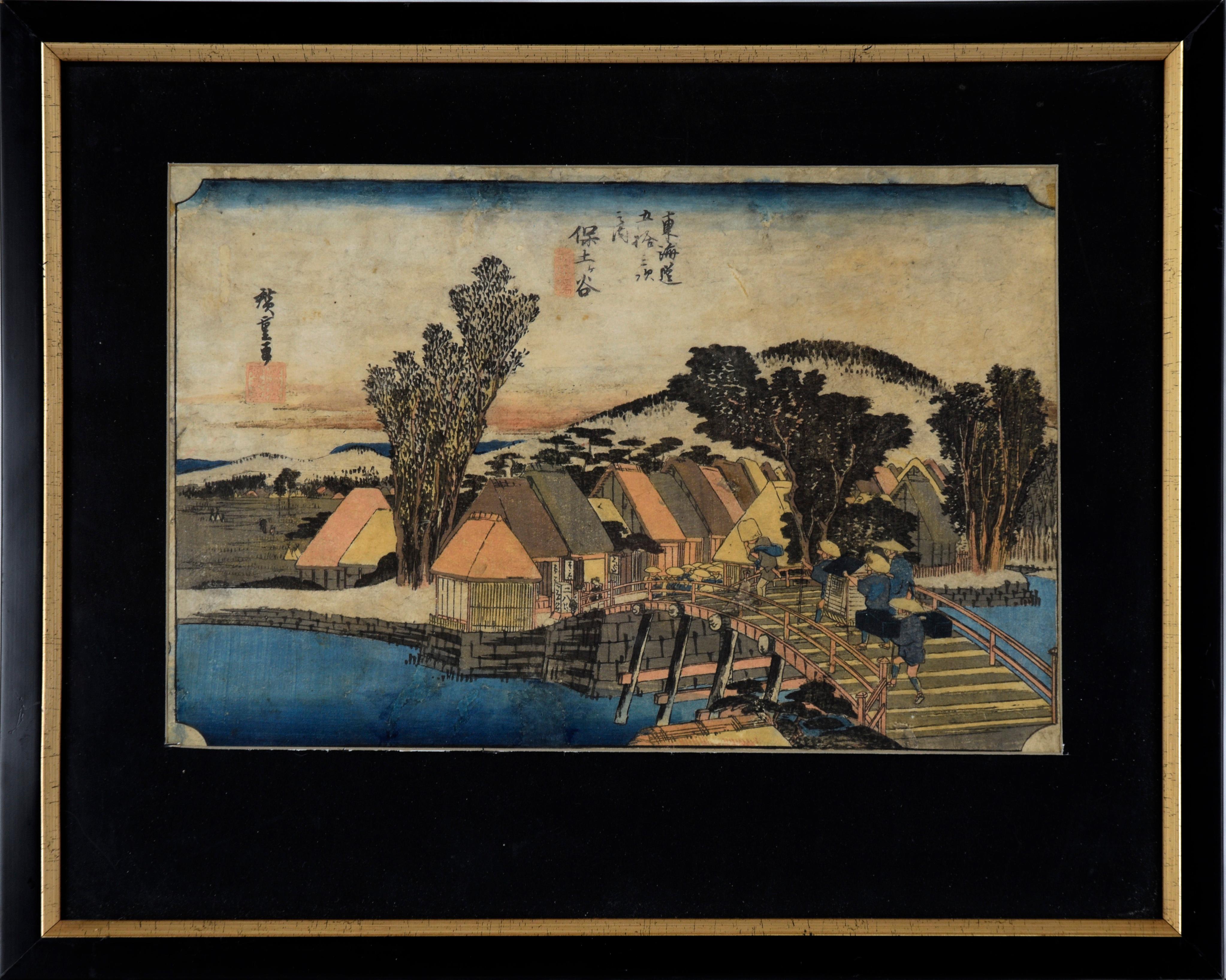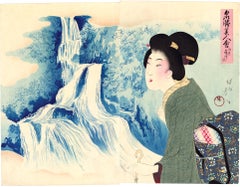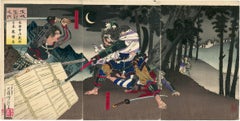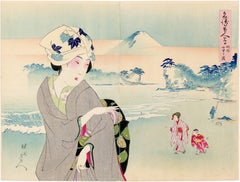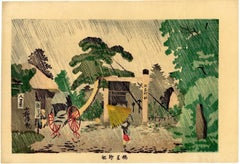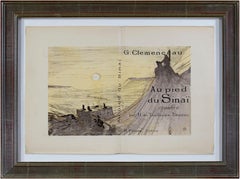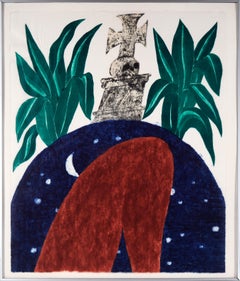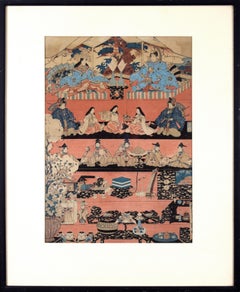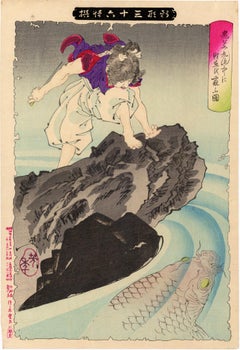
Oniwaka and the Great Carp from Thirty-six Ghosts Series
View Similar Items
Want more images or videos?
Request additional images or videos from the seller
1 of 6
Taiso YoshitoshiOniwaka and the Great Carp from Thirty-six Ghosts Series1889
1889
Price:$1,500
About the Item
- Creator:Taiso Yoshitoshi (1839-1892, Japanese)
- Creation Year:1889
- Dimensions:Height: 14.41 in (36.6 cm)Width: 9.85 in (25 cm)
- Medium:
- Period:
- Condition:Excellent impression, color and condition. Unbacked and untrimmed.
- Gallery Location:Burbank, CA
- Reference Number:Seller: YOT4651stDibs: LU33223193651
About the Seller
5.0
Recognized Seller
These prestigious sellers are industry leaders and represent the highest echelon for item quality and design.
Established in 1975
1stDibs seller since 2015
58 sales on 1stDibs
Associations
International Fine Print Dealers Association
Authenticity Guarantee
In the unlikely event there’s an issue with an item’s authenticity, contact us within 1 year for a full refund. DetailsMoney-Back Guarantee
If your item is not as described, is damaged in transit, or does not arrive, contact us within 7 days for a full refund. Details24-Hour Cancellation
You have a 24-hour grace period in which to reconsider your purchase, with no questions asked.Vetted Professional Sellers
Our world-class sellers must adhere to strict standards for service and quality, maintaining the integrity of our listings.Price-Match Guarantee
If you find that a seller listed the same item for a lower price elsewhere, we’ll match it.Trusted Global Delivery
Our best-in-class carrier network provides specialized shipping options worldwide, including custom delivery.More From This Seller
View AllJapanese Beauty Admiring Kirifuri Waterfall
By Yoshu Chikanobu
Located in Burbank, CA
A beauty turns to admire the Kirifuri Waterfall in Nikko Province. She holds the handle of an umbrella and wears fashionable clothing that is beautifully printed. This series pairs f...
Category
1890s Edo Landscape Prints
Materials
Handmade Paper, Mulberry Paper, Woodcut
$940 Sale Price
20% Off
Ôkubo Hikozaemon Protects the Hidden Shogun Triptych
By Taiso Yoshitoshi
Located in Burbank, CA
“War Chronicles of Osaka” (Osaka gunki no uchi). Okubo Hikozaemon, raising his sword, protects the hidden Tokugawa shogun from the spear of Gorô Matabei Mototsugu in a moonlit fores...
Category
1880s Other Art Style Figurative Prints
Materials
Mulberry Paper, Woodcut
Beauties on the Beach with view of Mount Fuji
By Yoshu Chikanobu
Located in Burbank, CA
Shichirigahama, Sagami Province. A beauty in the foreground waves to her young companions, who run towards her on the beach. The beauty at left wears a western-style golden ring. We ...
Category
1890s Edo Landscape Prints
Materials
Handmade Paper, Mulberry Paper, Woodcut
Umewaka Shrine in the Rain
By Kobayashi Kiyochika
Located in Burbank, CA
Umewaka Shrine, from an untitled series of prints depicting Tokyo. A woman braces her umbrella against the rain and a man waits out the storm next to his jinriksha in this view of th...
Category
1870s Edo Landscape Prints
Materials
Handmade Paper, Mulberry Paper, Woodcut
Japanese Beauties Enjoy a Full Moon
By Utagawa Kunisada (Toyokuni III)
Located in Burbank, CA
"Sun, Moon and Stars". Three beauties enjoy a full moon on the veranda of a teahouse or restuarant. The woman on the left kneels and adjusts her lavishly printed kimono. The beauty in the center has her hair down, and behind her is a screen against which shadows are beautifully silhouetted, which adds an air of mystery. The seated woman on the right is perhaps a geisha, as we see a shamisen lying next to her. Before her is a tray with an assortment of foods. One may surmise that the beauties are being compared to the sun, the moon, and the stars. On the left we glimpse a full moon shining over the peaceful bay, and boats at harbor. Original first edition Japanese color woodblock print triptych...
Category
1840s Edo Figurative Prints
Materials
Mulberry Paper, Woodcut
The Boy Botaro and his Nurse Otsuji and a Lotus Pond
By Taiso Yoshitoshi
Located in Burbank, CA
The boy Bôtarô watches his nurse Otsuji haul a bucket of water from the well. From the kabuki play Osanago no adauchi. Most interesting is the lush backdrop of lotus flowers and pump...
Category
1880s Other Art Style Figurative Prints
Materials
Mulberry Paper, Woodcut
You May Also Like
Toulouse Lautrec Original Lithograph Famous Political 1800s Collection Signed
By Henri de Toulouse-Lautrec
Located in Milwaukee, WI
"Lautrec Book: From Au Pied du Sinai written by Georges Clemenceau" lithographs created by the legendary Henri de Toulouse-Lautrec. This book, Au Pied...
Category
1890s Post-Impressionist Figurative Prints
Materials
Lithograph, Mulberry Paper
"Grave of Santa Anna's Leg" Original Woodblock Print, Signed Artist's Proof
By Carol Summers
Located in Soquel, CA
"Grave of Santa Anna's Leg" Original Woodblock Print, Signed Artist's Proof
Boldly colored woodblock print by Carol Summers (American, 1925-2016). This piece is a segment of a grave, with a headstone that has a skull and cross. There are two bright green plants flanking the headstone. Below the headstone and plants, there is a large arched blue shape, with a crescent moon and stars. A red leg, bent at the knee, cuts across the blue arch.
Signed "Carol Summers" along the right edge of the blue shape.
Numbered and titled "A/P Grave of Sant Anna's Leg" along the left edge of the blue shape.
Presented in a silver colored aluminum frame.
Frame size: 32.245"H x 27.25"W
Paper size: 29.75"H x 24.5"W
Carol Summers (1925-2016) has worked as an artist throughout the second half of the 20th century and into the first years of the next, outliving most of his mid-century modernist peers. Initially trained as a painter, Summers was drawn to color woodcuts around 1950 and it became his specialty thereafter. Over the years he has developed a process and style that is both innovative and readily recognizable. His art is known for it’s large scale, saturated fields of bold color, semi-abstract treatment of landscapes from around the world and a luminescent quality achieved through a printmaking process he invented.
In a career that has extended over half a century, Summers has hand-pulled approximately 245 woodcuts in editions that have typically run from 25 to 100 in number. His talent was both inherited and learned. Born in 1925 in Kingston, a small town in upstate New York, Summers was raised in nearby Woodstock with his older sister, Mary. His parents were both artists who had met in art school in St. Louis. During the Great Depression, when Carol was growing up, his father supported the family as a medical illustrator until he could return to painting. His mother was a watercolorist and also quite knowledgeable about the different kinds of papers used for various kinds of painting. Many years later, Summers would paint or print on thinly textured paper originally collected by his mother.
From 1948 to 1951, Carol Summers trained in the classical fine and studio arts at Bard College and at the Art Students League of New York. He studied painting with Steven Hirsh and printmaking with Louis Schanker. He admired the shapes and colors favored by early modernists Paul Klee (Sw: 1879-1940) and Matt Phillips (Am: b.1927- ). After graduating, Summers quit working as a part-time carpenter and cabinetmaker (which had supported his schooling and living expenses) to focus fulltime on art. That same year, an early abstract, Bridge No. 1 was selected for a Purchase Prize in a competition sponsored by the Brooklyn Museum.
In 1952, his work (Cathedral, Construction and Icarus) was shown the first time at the Museum of Modern Art in New York City in an exhibition of American woodcuts...
Category
1980s Contemporary Landscape Prints
Materials
Ink, Handmade Paper, Woodcut
"First Horse Day, 1896" - Chiyoda Palace - Japanese Woodblock by Chikanobu Yoshu
By Toyohara Chikanobu
Located in Soquel, CA
"First Horse Day, 1896" - Chiyoda Palace - Japanese Woodblock by Chikanobu Yoshu
Colorful and expressive court scne by Toyohara Chikanobu,"Yoshu" (Japanese, 1838-1912).
This is the r...
Category
1890s French School Figurative Prints
Materials
Ink, Rice Paper, Woodcut
"Various Himochi" Wagashi Festival Japanese Woodblock Print by Utagawa Toyokuni
By Utagawa Toyokuni
Located in Soquel, CA
"Various Himochi" Wagashi Festival Japanese Woodblock Print by Utagawa Toyokuni
Rare oversized early 19th century 5-tiered woodblock by Utagawa Ichiyosai Toyokuni, (Japan, 1769-1825), a Japanese lord and wife oversee a sekku festival of food, music, and dolls or toys. '"oshi" is the first day of “Mi (Snake)” in the third month of the lunar calendar. This day, known in modern Japan as the Girls' Festival, originated in China as a form of purification ceremony in which water and drinking peach blossom wine were used to drive away evil. Many kinds of hishi-mochi appear in this picture of hina ningyo (dolls associated with Hinamatsuri, or the Girl’s Day) from Omochae.
The custom of eating special dishes at events throughout the year and at milestones in people's lives has existed since ancient times. This paragraph specifically focuses on the annual event called sekku, and life events that involve eating sweets. Joshi is the first day of “Mi (Snake)” in the third month of the lunar calendar. This day, known in modern Japan as the Girls' Festival, originated in China as a form of purification ceremony in which water and drinking peach blossom wine were used to drive away evil. According to the Keiso saijiki, in ancient China, on the third day of the third lunar month, people ate “ryuzetsuhan,” which is the juice of gogyo (Jersey cudweed) mixed with rice flour and nectar. In Japan, there is a record in the Heian period history book Nihon Montoku tenno jitsuroku [839-5] that it was an annual event to make kusamochi using gogyo on the third day of the third month of the lunar calendar, which may have been influenced by Chinese customs.
The tradition of eating kusamochi on the third day of the third month of the lunar calendar continued after that. By the Edo period, however, hishimochi had come to be used as a sweet to serve on the third day of the third month. A picture of a hishimochi is included in the Morisada manko , which we mentioned in Part 1. According to it, hishimochi in the Edo period were often three layers of green-white-green instead of the now common red-white-green. However, it is possible to see from our collection that not all hishimochi were made in this way. Omochae published in 1857, is a good example. Omochae is a type of ukiyoe print...
Category
1820s Edo Figurative Prints
Materials
Ink, Rice Paper, Woodcut
Toshogu Shrine
Located in Middletown, NY
In image of the Tokugawa family paying homage to Tosho-gu Shrine in Nikko.
Tokyo: Matsuki Heikichi, 1896
Woodcut in ink with embossing and hand-coloring in watercolor on handmade m...
Category
Late 19th Century Edo Figurative Prints
Materials
Watercolor, Handmade Paper, Woodcut
The Battle of Dan-no-ura in Yashima, Nagato Province in the First Year .....
By Utagawa Yoshitora
Located in Middletown, NY
The Battle of Dan-no-ura in Yashima, Nagato Province in the First Year of the Bunji Era (1185)
Tokyo c. 1830
Woodblock print (nishiki-e) with ink and hand-coloring in watercolor on handmade mulberry paper, 14 7/16 x 9 15/16 inches (367 x 252 mm), ōban tate-e, the full sheet. In good condition with some handling creases. Colors are fresh and extremely vibrant. The right panel from the triptych by Yoshitora depicting one of Japan's most storied naval battles. An impression of this work may be found in the permanent collection of the Honolulu Museum of Art.
The great naval battle of Dan-no-ura in 1185 was the final climax in a long series of bitter wars between two powerful families in feudal Japan...
Category
Early 19th Century Edo Figurative Prints
Materials
Watercolor, Handmade Paper, Woodcut
